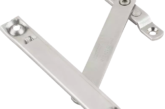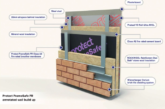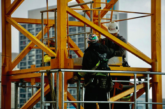
Peter Lackey, Fire Manager UK & Ireland at Johnson Controls, considers the role of the facilities manager of the future and the integration of fire and security systems.
Fire and security systems have traditionally been operated separately, with no meaningful communication between the two. The regulatory and technical hurdles to successful integration meant that facilities managers rarely considered the potential benefits of linking up systems like fire detection and CCTV under a single management point. However, with the industry under pressure and technology continually improving, now is the time to reconsider system integration in building management.
What’s the situation now?
Reducing false alarms is no longer just convenient — it’s essential. False alarms cost the UK taxpayer an average of £1bn each year. Fire brigades can also now invoice organisations to cover the cost of attending a false alarm call, which can be more than £400 per appliance. As a result, owners of poorly performing systems are pushed to address the causes by upgrading or improving their service programmes.
Integrating CCTV into fire detection systems is another good way to decrease false alarms, giving security operators the ability to visually and remotely investigate alerts to establish whether a fire is really happening. Integration can offer monitoring teams an additional layer of visual insight into the building, enabling them to quickly make sense of alerts coming through the system and thus reducing the frequency of unnecessary fire brigade call-outs.
However, this technology is still on the horizon for most. Until now, building managers have taken a siloed approach, separating fire and security, mostly due to differences in regulation and hardware. It’s not simple to integrate a fire detection system with a CCTV loop if they run off different cabling and voltages, or if the regulator has different requirements for each. Health and safety regulations often treat fire and security systems differently, discouraging companies from exploring integration.

What needs to be done?
CCTV integration is still relatively under-developed, as the industry is only just starting to move away from its traditional approach. But the technology exists: the market’s biggest players have begun to launch graphical front-end systems capable of handling the extra inputs and making the system more user-friendly.
How can we get started?
With older fire systems, building managers must deal with differences in voltage and cabling, making it impossible to simply patch cameras into existing circuits. Countering this problem requires an interfacing system. Organisations should overlay a separate camera system mirroring the existing fire system, connecting the two networks through the main control room.
In this situation, the central user interface is key — you must have an intuitive platform to work over. Following integration, the ideal situation is that the new system acts as a labour-saving device, making it easier and safer for security staff to do their jobs. It should not, however, make it harder to decipher multiple sensory inputs. What’s more, the arrival of smart internet of things (IoT) devices means that teams can be more confident about providing effective coverage for the whole site, particularly across large sites, as automated assistance can help speed up response times.
This will be particularly useful in high value, high risk sites with remote areas where no workers are present for long periods of time, as these can be monitored continuously from a central point.
To help make this a reality, it’s essential to choose the right partner. Councils, housing associations and their contractor partners should work with product-agnostic service providers who can supply the cameras and fire detection equipment, as well as provide innovative solutions to any new problems that will doubtless be encountered in projects like this.
“False alarms cost the UK taxpayer an average of £1bn each year.”
Integration is the future
As well as decreasing the rate of false alarms and speeding up response times for fire brigades, CCTV integration could potentially generate a host of efficiencies for security managers. All industries are heading this way — the advent of connected ‘things’ means it is simply a matter of time before everything from cameras to detectors, doorways to stairwells will contain IP-enabled sensors, sending essential information back to a central control room. In fire safety, where the stakes are always high, it’s vital that security teams take full advantage of the new capabilities on offer, and maximise their chances of responding successfully every time.
By working with an innovative partner, organisations can put integration at the centre of their systems, creating an insightful, fast-responding fire detection system with cameras covering the whole site. It should not simply be a goal to integrate CCTV — it must become a reality.








